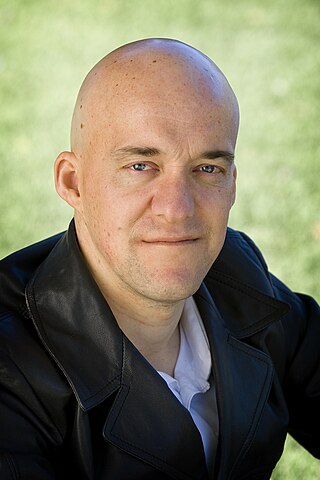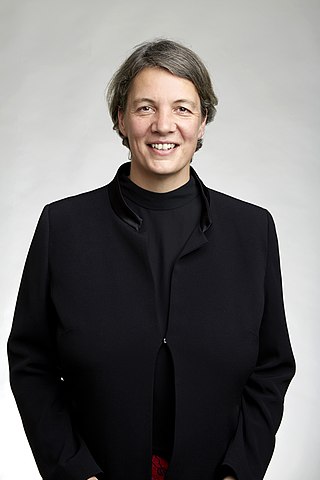
Green building refers to both a structure and the application of processes that are environmentally responsible and resource-efficient throughout a building's life-cycle: from planning to design, construction, operation, maintenance, renovation, and demolition. This requires close cooperation of the contractor, the architects, the engineers, and the client at all project stages. The Green Building practice expands and complements the classical building design concerns of economy, utility, durability, and comfort. Green building also refers to saving resources to the maximum extent, including energy saving, land saving, water saving, material saving, etc., during the whole life cycle of the building, protecting the environment and reducing pollution, providing people with healthy, comfortable and efficient use of space, and being in harmony with nature. Buildings that live in harmony; green building technology focuses on low consumption, high efficiency, economy, environmental protection, integration and optimization.’
The Industrial Technology Research Institute is a technology research and development institution in Taiwan. It was founded in 1973 and is headquartered in Hsinchu City, Taiwan, with branch offices in the U.S., Europe, and Japan.

The Eureka Prizes are awarded annually by the Australian Museum, Sydney, to recognise individuals and organizations who have contributed to science and the understanding of science in Australia. They were founded in 1990 following a suggestion by science journalist Robyn Williams.

Mark Diesendorf is an Australian academic and environmentalist, known for his work in sustainable development and renewable energy. He currently teaches environmental studies at the University of New South Wales, Australia. He was formerly professor of environmental science and founding director of the Institute for Sustainable Futures at the University of Technology, Sydney and before that a principal research scientist with CSIRO, where he was involved in early research on integrating wind power into electricity grids. His most recent book is Sustainable Energy Solutions for Climate Change.
The Faculty of Engineering is a constituent body of the University of New South Wales (UNSW), Australia. UNSW was formed on 1 July 1949, and the Faculty was established on 8 May 1950 with the inaugural meeting of the Faculty taking place on 7 June 1950. It was one of the first three University faculties which were established by Council, and was initially formed of four departments including Electrical Engineering, Mechanical Engineering, Civil Engineering and Mining Engineering, headed by Dean Professor Harold Brown.
Grimshaw Architects is an architectural firm based in London. Founded in 1980 by Nicholas Grimshaw, the firm was one of the pioneers of high-tech architecture. In particular, they are known for their design of transport projects including Amsterdam Bijlmer ArenA railway station, Waterloo International railway station and the award-winning Southern Cross railway station which was the recipient of the Royal Institute of British Architects Lubetkin Prize. Grimshaw is behind the design of the Sustainability Pavilion, an innovative net-zero building, for Expo 2020. The firm currently has offices in Los Angeles, New York, London, Paris, Dubai, Melbourne and Sydney, employing over 600 staff.

Barry William Brook is an Australian scientist. He is an ARC Australian Laureate Professor and Chair of Environmental Sustainability at the University of Tasmania in the Faculty of Science, Engineering & Technology. He was formerly an ARC Future Fellow in the School of Earth and Environmental Sciences at the University of Adelaide, Australia, where he held the Sir Hubert Wilkins Chair of Climate Change from 2007 to 2014. He was also Director of Climate Science at the Environment Institute.

Micro-sustainability is the portion of sustainability centered around small scale environmental measures that ultimately affect the environment through a larger cumulative impact. Micro-sustainability centers on individual efforts, behavior modification, education and creating attitudinal changes, which result in an environmentally conscious individual. Micro-sustainability encourages sustainable changes through "change agents"—individuals who foster positive environmental action locally and inside their sphere of influence. Examples of micro-sustainability include recycling, power saving by turning off unused lights, programming thermostats for efficient use of energy, reducing water usage, changing commuting habits to use less fossil fuels or modifying buying habits to reduce consumption and waste. The emphasis of micro-sustainability is on an individual's actions, rather than organizational or institutional practices at the systemic level. These small local level actions have immediate community benefits if undertaken on a widespread scale and if imitated, they can have a cumulative broad impact.
Environmentally sustainable design is the philosophy of designing physical objects, the built environment, and services to comply with the principles of ecological sustainability and also aimed at improving the health and comfort of occupants in a building. Sustainable design seeks to reduce negative impacts on the environment, the health and well-being of building occupants, thereby improving building performance. The basic objectives of sustainability are to reduce the consumption of non-renewable resources, minimize waste, and create healthy, productive environments.

The World Resources Forum (WRF) is a non-profit organisation for sharing knowledge about the economic, political, social and environmental implications of global resource use. WRF promotes resource productivity among researchers, policymakers, business, NGOs and the public. In addition to organizing international and regional conferences, the WRF Secretariat coordinates multistakeholder dialogue projects, amongst others the Sustainable Recycling Initiative (SRI) as well as the H2020 projects Towards a World Forum on Raw Materials (FORAM), and CEWASTE. The WRF contributes to other EC-projects and projects with the German development organisation GiZ, UNEP and UNIDO.

Michelle Yvonne Simmons is an Australian quantum physicist, recognised for her foundational contributions to the field of atomic electronics.

MBA Polymers is a recycling company with operations globally that recovers plastics from waste electrical and electronic equipment (WEEE) and auto-shredder residue from end-of-life automobiles (ELV).

Emma Letitia Johnston is the Deputy Vice Chancellor (Research) at the University of Sydney. She was former, Dean of Science at the University of New South Wales and President of Science & Technology Australia. She is an authority in marine ecology and a former Pro Vice-Chancellor (Research) at UNSW.
Martina Heide Stenzel is a Professor in the Department of Chemistry at the University of New South Wales (UNSW). She is also a Royal Australian Chemical Institute (RACI) University Ambassador. She became editor for the Australian Journal of Chemistry in 2008 and has served as Scientific Editor and as of 2021, as Editorial Board Chair of RSC Materials Horizons.

The UTS Vicki Sara Building, also known as the Science Faculty Building, is the building housing the Faculty of Science and the Graduate School of Health in the University of Technology Sydney in New South Wales, Australia. It is the third building to be opened under the plan for $154 million worth of structures designed by Durbach Block Jaggers (DBJ) in association with BVN Architecture constructed by Richard Crookes Constructions. The building is located in the City Campus at 67 Thomas St, Ultimo. It was completed in October 2014 and opened for teaching in February 2015. The building has 8 levels that provide spaces for over 1200 staff and students including teaching, learning and research facilities.

Rose Amal is an Australian chemical engineer, currently serving as Scientia Professor and ARC Laureate Fellow in the School of Chemical Engineering at the University of New South Wales, Australia, where she is the director of the Particles and Catalysis Research Group. Previously she was Director of the ARC Centre of Excellence for Functional Nanomaterials (2010–2013). From 2012 to 2015 she was named in the Engineers Australia list of Australia's Top 100 Most Influential Engineers. In 2014 she became the first female engineer elected a Fellow of the Australian Academy of Science.

The Hong Kong Research Institute of Textiles and Apparel (HKRITA) is a public research institute in Hong Kong. It was established in April 2006 and hosted by The Hong Kong Polytechnic University (PolyU). With funding support from the Innovation and Technology Commission, HKSAR Government, it acts as a focal point to enhance technological innovation in textiles and apparel industry for the development of highly competitive industrial clusters in Hong Kong and the Greater Bay Area.
Spinnova Plc is a Finnish sustainable material company, part of a handful of companies "racing to produce recycled fabrics on a commercial scale."

Julie Mae Schoenung is an American materials scientist who is a professor at the University of California, Irvine. She is co-director for the University of California Toxic Substances Research and Teaching Program Lead Campus in Green Materials. Her research considers trimodal composites and green engineering. She was elected Fellow of The Minerals, Metals & Materials Society in 2021.
Camille Goldstone-Henry is the founder and CEO of Xylo systems, which use Artificial Intelligence to measure biodiversity, and winner of Women of AI Australia and New Zealand, for Climate Change, as well as Trailblazer of 2022. She is also a wildlife scientist and Kamilaroi woman, who has worked with orange-bellied parrots and Tasmanian tigers.













